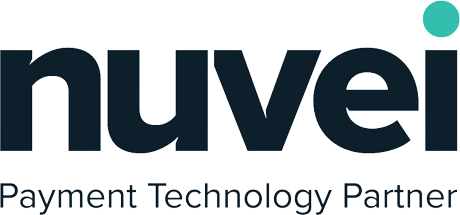CI/CD Services
Better software, delivered faster.

Go Beyond Legacy Solutions
We at GlobalDots hunt for the most cutting edge and relevant technologies out there.
Once tested and found qualified we bring you the most certified innovative products out there for every pressing use case.

Your Benefits
By using CI/CD in the product life cycle, the quality of code is improved significantly, as smaller portions are deployed, under continuous testing on merge and following other industry standard version control principles.

 Developer Collaboration
Developer Collaboration
Automatic code integration improves team collaboration. To incorporate CI in your development lifecycle, the use of proper git functionalities results in visibility in the development process and makes commuting between developers easier.

Detect errors early and fix them quickly by various strategies in the CI/CD process such as: running a test suite on branch merge, sending notifications to the developers with the details of reason for merge request failure.

Execute quick rollbacks on target environments in case something goes wrong in your production environment to save precious development time.

FAQs
-
Can I switch between vendors if I’m not satisfied with one of them?
Yes, one of the main advantages of working with GlobalDots is that we have relationships with multiple vendors per solution category, so our customers can switch between vendors if they would like to. Moreover, we will proactively offer better vendors if we see the value for the customers in terms of features, capabilities or price.
-
How does GlobalDots keep up with the latest technologies in the market?
The people working at GlobalDots live and breath technology. We have relationships with all the cool startups and always seeking new vendors with innovative tech to offer to our customer base. We research and explore emerging technologies on a weekly and daily basis, we filter out the noise and focus only on the promising solutions we vetted that will bring the most value to our customers.
-
What does support look like when working with GlobalDots?
Our solutions architects, engineers and DevOps experts have hands-on experience with the solutions we resell and integrate. Our engineers work with you to resolve any issue to your satisfaction, and never leave you hanging. If needed, we’ll be the ones to engage directly with the vendor, so you don’t have to.
-
What is CI CD in simple terms?
CI/CD is a way to ship code reliably. CI (Continuous Integration) means developers merge their changes often, testing them automatically to catch bugs early. CD (Continuous Delivery or Deployment) means those changes can go live quickly – sometimes instantly – without breaking stuff. It’s like an assembly line for software: build, check, launch, repeat.
-
What does CI CD mean?
CI/CD stands for Continuous Integration and Continuous Delivery (or Deployment). It’s a DevOps practice where code updates are integrated, tested, and released in small, frequent batches.
The goal? Less downtime, fewer surprises, and faster feedback. It’s the heartbeat of modern software delivery. -
What is the difference between CI and CD in DevOps?
CI (Continuous Integration) – Focuses on merging code changes into a shared repository often (daily, even hourly). Automated tests run to ensure nothing’s broken. It’s about catching issues early.
CD (Continuous Delivery/Deployment) – Takes CI further.
Continuous Delivery preps code to deploy anytime with a manual trigger.
Continuous Deployment goes all-in, auto-pushing every passing change to production. CD’s about shipping, CI’s about building. -
How is CI different from CD?
CI stops at integration and testing – code’s ready, but not live.
CD picks up there, handling the release. CI asks, “Does it work together?” CD asks, “Can it go live?”
One’s prep, the other’s action. In practice, CI feeds CD, but you can do CI without CD if you’re not ready to deploy fast. -
What are examples of CI CD?
- Tools: GitHub Actions, GitLab CI/CD (built-in with Git), CircleCI (cloud-based automation).
- Workflows: A team commits code to GitHub, triggering Actions to test and package it, then deploys via AWS CodeDeploy.
- Services: GlobalDots’ CI/CD setup, automating builds for a client’s app, testing across environments, and rolling out updates.
-
What is a real-time example of CI CD?
Picture a mobile app team:
- A developer pushes a bug fix to GitLab.
- The CI pipeline kicks off – runs unit tests, builds the app, and checks for crashes.
- If it passes, CD takes over, deploying the update to a staging server in real time.
- Testers approve, and it’s live in the app store within hours.
That’s CI/CD humming – no delays, no manual uploads.
-
What are real-life examples of CD?
Netflix: Pushes UI tweaks to millions of users daily via automated CD pipelines.
Etsy: Deploys site updates 50+ times a day, using CD to keep the marketplace live and bug-free.
GlobalDots Client: A fintech firm uses CD to roll out secure payment features weekly, tested and deployed without downtime.
-
What is an example of a continuous delivery?
A web dev team builds an e-commerce site.
They use CircleCI: every code push triggers tests (unit, integration). If green, the site’s packaged and staged on AWS – ready to deploy. The product owner clicks “go” after a quick check, and it’s live. That’s continuous delivery: automated up to the final gate, human-approved release.CI/CD’s all about momentum – keep code moving, keep quality high.
-
What is the primary goal of DevOps?
The primary goal of DevOps is to bridge the gap between development and operations for faster, better software delivery. It’s about collaboration – getting teams to work together, automate grunt work, and ship updates continuously without sacrificing quality. Think shorter cycles, fewer errors, and happier users.
-
Which tool is used for CI CD in DevOps?
No single “right” tool – depends on your stack. Popular ones:
- GitHub Actions – Built into GitHub, handles everything from code to deploy.
- Jenkins – Open-source, flexible, script-driven pipelines.
- GitLab CI/CD – Built into GitLab, handles everything from code to deployment.
- CircleCI – Cloud-based, quick setup for testing and deployment.
- AWS CodePipeline – Ties into AWS services for end-to-end automation.
Pick what fits – Jenkins for control, GitLab for simplicity, or a managed service like GlobalDots if you want it hands-off.
-
Is CI CD part of deployment?
Yes and no. CI/CD includes deployment, but isn’t just deployment.
CI (Continuous Integration) stops before – merging and testing code.
CD (Continuous Delivery/Deployment) owns the deployment part:
Delivery preps code to deploy anytime, while Deployment auto-pushes it live.
So, deployment’s a chunk of CI/CD – specifically the CD side – but the full process starts way earlier, at integration. It’s the whole journey, not just the finish line.DevOps and CI/CD are tight partners – automation’s the muscle, culture’s the brain.
-
Is CI CD part of Agile?
Yes, CI/CD fits snugly into Agile.
Agile’s all about iterative progress – small, frequent updates based on feedback. CI/CD makes that real by automating the build, test, and release cycle. When Agile says “deliver working software often,” CI/CD answers with pipelines that push code daily or hourly. It’s not required for Agile, but it’s a natural teammate – think of it as the engine powering Agile’s speed. -
Is CI CD and Agile the same?
No, they’re not the same. Agile is a methodology – a way of working with sprints, standups, and customer focus. CI/CD is a practice – a technical workflow for integrating, testing, and deploying code fast. Agile sets the “why” (flexible, adaptive development); CI/CD provides the “how” (automation to ship it). You can do Agile without CI/CD – manually testing and releasing – but CI/CD without Agile’s iterative spirit misses the point. They overlap in goals (speed, quality), but they’re distinct: one’s a philosophy, the other’s a toolset.
-
Is GitHub a CI CD tool?
Not exactly – GitHub itself is a code hosting platform, but it offers GitHub Actions, a built-in CI/CD feature. With Actions, you can automate builds, tests, and deployments right from your repo. So, GitHub isn’t a standalone CI/CD tool, but it becomes one when you use Actions. It’s handy for tight integration with your codebase.
-
Is Jenkins a CI CD tool?
Yes, Jenkins is a full-on CI/CD tool. It’s an open-source automation server that runs pipelines for building, testing, and deploying code. You script the workflow (in Groovy or via plugins), and it handles everything from commit to production. Flexible, powerful, but needs setup – perfect for custom jobs.
-
Is Azure DevOps a CI CD?
Yes, Azure DevOps is a CI/CD platform. It’s a Microsoft suite with tools like Azure Pipelines, which automates CI/CD workflows – think building, testing, and pushing apps to Azure or elsewhere. It’s broader than just CI/CD (includes repos, boards), but Pipelines is the CI/CD core. Tight fit for Azure users.
-
Is Terraform a CI CD tool?
No, Terraform isn’t a CI/CD tool – it’s an Infrastructure as Code (IaC) tool. It provisions and manages cloud resources (e.g., VMs, networks) using code. You can use it in a CI/CD pipeline – like deploying infra as part of a Jenkins job – but it’s not for building or testing apps. It’s a setup guy, not the whole show.
-
Is Docker a CI CD tool?
No, Docker isn’t a CI/CD tool either – it’s a containerization platform. It packages apps and dependencies into containers for consistency. CI/CD tools (e.g., Jenkins, GitLab) often use Docker to run builds or deploy apps, but Docker itself doesn’t manage the pipeline. It’s a key player, not the coach.
-
What tool is used for CI CD?
Depends on your needs:
- Jenkins – Open-source, customizable.
- GitLab CI/CD – Repo-integrated, user-friendly.
- CircleCI – Cloud-based, fast setup.
- Azure Pipelines – Microsoft ecosystem pick.
- GitHub Actions – GitHub-native automation.
- Etc …
-
What is the most widely used CI CD?
“Widely used” varies by data, but Jenkins often tops the list. It’s been around forever (since 2011), it’s free, and it’s got a massive plugin ecosystem – over 1,800 last count. GitLab CI/CD and GitHub Actions are catching up, though – easier for newer teams.
-
What is the most popular CI CD?
Popularity shifts with trends. Right now, GitHub Actions is hot – tied to GitHub’s 100M+ users, it’s simple and cloud-native. Jenkins still rules for enterprise, but Actions wins for open-source and small teams. GitLab CI/CD follows close, especially for all-in-one repo-to-deploy vibes.
-
What does a CI CD engineer do?
A CI/CD engineer focuses on designing, building, and maintaining the pipelines that automate software delivery. They ensure code moves smoothly from development to production by setting up Continuous Integration (CI) – where code changes are merged and tested automatically – and Continuous Delivery/Deployment (CD) – where those changes are prepped or pushed live with minimal manual effort. Day-to-day, they:
- Configure tools like Jenkins, GitLab CI, or Azure Pipelines to run builds and tests.
- Write scripts (e.g., Python, Bash) to automate tasks like deployments or environment setups.
- Troubleshoot pipeline failures – think broken tests or deployment hiccups.
- Collaborate with developers and ops teams to keep the process fast and reliable.
- Monitor and optimize the system, ensuring zero downtime and quick rollouts.
It’s a hands-on, technical role – part coder, part problem-solver – keeping the software lifecycle humming.
-
Why should I use CI CD?
CI/CD speeds up your software game. With Continuous Integration (CI), you catch bugs early by merging and testing code often – less time debugging later. Continuous Delivery/Deployment (CD) lets you push updates fast, keeping users happy with fresh features or fixes. It cuts manual work, reduces errors, and scales with demand. For a team using CI/CD Services, it means shipping code daily instead of monthly – no bottlenecks, no chaos.
-
Why is CI CD so important?
It’s the backbone of modern dev. Without it, you’re stuck with slow, risky releases – think weeks of testing or surprise crashes in production. CI/CD keeps quality high and delivery quick, aligning with customer needs. Stats back it: teams with CI/CD deploy 200x more often and recover from failures 24x faster (DORA 2023 report). It’s not optional if you want to compete – stagnant code loses to rapid iteration.
It’s the backbone of modern dev. Without it, you’re stuck with slow, risky releases – think weeks of testing or surprise crashes in production. CI/CD keeps quality high and delivery quick, aligning with customer needs. Stats back it: teams with CI/CD deploy 200x more often and recover from failures 24x faster (DORA 2023 report). It’s not optional if you want to compete – stagnant code loses to rapid iteration.
-
What are the CI CD best practices?
Here’s the shortlist:
- Automate Everything – Builds, tests, deploys – manual steps kill momentum.
- Test Early, Test Often – Unit, integration, and end-to-end tests in CI catch issues fast.
- Small Batches – Commit small changes frequently; big merges are trouble.
- Monitor Pipelines – Track build times, failure rates – fix bottlenecks quickly.
- Secure the Process – Scan code for vulnerabilities (e.g., Snyk), lock down credentials.
- Rollback Ready – CD should allow instant revert if a deploy flops.
- Document Workflows – Keep pipelines clear so anyone can jump in.
Follow these, and your pipeline’s a well-oiled machine – GlobalDots tunes clients this way.
-
What are the types of CI?
CI doesn’t split into “types” like ice cream flavors – it’s one concept with variations in execution:
- Basic CI – Developers push code daily, triggering automated builds and unit tests (e.g., Jenkins job).
- Feature Branch CI – Each feature gets its own branch, tested before merging to main.
- Pull Request CI – Tests run on PRs to catch issues pre-merge (GitHub Actions style).
- Scheduled CI – Nightly builds for heavier tests (less common now).
The core’s the same: integrate often, test always – approach depends on team flow.
-
What is the difference between CI and CD tools?
CI Tools – Focus on integration and testing. They build code, run unit tests, and flag failures. Examples: Jenkins (early stages), CircleCI (lightweight CI). It’s about “does it work?”
CD Tools – Handle delivery or deployment post-CI. They stage code for release or push it live. Examples: AWS CodeDeploy, Spinnaker. It’s about “get it out there.”
In practice, most tools (GitLab CI/CD, Azure Pipelines) do both – CI feeds CD – but the focus shifts: CI’s prep, CD’s action. -
What is the difference between CI CD and Jenkins?
CI/CD is the process – integrating and delivering code continuously.
Jenkins is a tool to make it happen.















